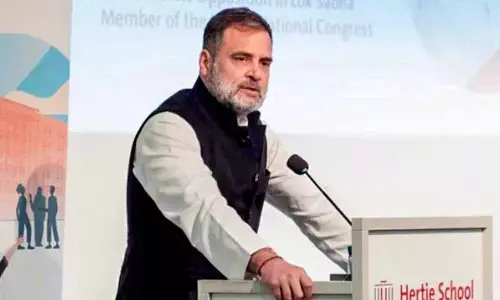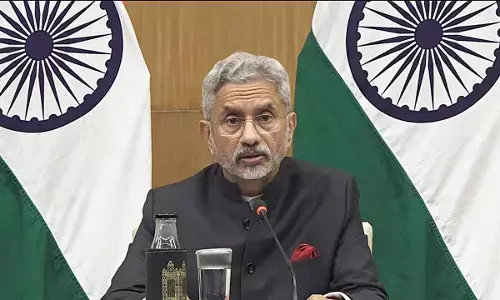Holistic approach to river cleanliness

The Namami Gange Programme is a visionary initiative aimed at rejuvenating the sacred River Ganga and its tributaries
The Namami Gange Programme is a visionary initiative aimed at rejuvenating the sacred River Ganga and its tributaries. Launched in June 2014 to address various sources of pollution and to enhance the ecological health of the river, Namami Gange encompasses a wide array of interventions and projects.
Ganga: Lifeline of India
The Ganga River, one of the most sacred rivers in the world, faces significant threats from excessive water abstraction and pollution. As a vital part of India’s cultural heritage and a key resource for sustenance, the river’s health is of paramount importance. To address these challenges, the Namami Ganga program was launched with the twin objectives of effectively reducing pollution and conserving and rejuvenating River Ganga.
Ganga River Basin
The Ganga River basin is the largest in India, encompassing 27% of the country’s land mass and supporting about 47% of its population. Spanning over 11 states, the basin covers nearly 27% of India’s total geographical area. The majority of the basin, around 65.57%, is used for agriculture, while water bodies cover 3.47% of the area. Despite receiving 35.5% of the total water input in terms of precipitation, the Ganga River Basin is the second most water-stressed basin in India, following the Sabarmati Basin, with only 39% of the average per capita annual rainwater input among major Indian river basins.
Cleanliness Drive
Despite being revered nationally, the Ganga River has been deteriorating for a long time. This degradation directly impacts humans by diminishing the river’s ecosystem services, such as: Provisioning services: Providing food, fresh water, and fibers; Regulating services: Attenuating floods, recharging groundwater, and preventing saltwater intrusion; Supporting services: Recycling nutrients, forming soil, and maintaining biodiversity; Cultural services: Offering recreation and spiritual fulfillment; These increasing problems necessitated a focused programme for the rejuvenation of the Ganga, leading to the creation of Namami Gange.
Vision
The vision for Ganga rejuvenation revolves around restoring the river’s wholesomeness, defined by ensuring “Aviral Dhara” (Continuous Flow), “Nirmal Dhara” (Unpolluted Flow), and maintaining its geological and ecological integrity. A comprehensive Ganga River Basin Management Plan (GRBMP) was developed by a consortium of seven IITs, emphasizing an Integrated River Basin Management (IRBM) approach with multi-sectoral and multi-agency interventions.
Key Achievements
1. Creating Sewerage Treatment Capacity: The programme has made significant strides in establishing sewerage infrastructure projects across the Ganga basin. These projects are crucial in reducing pollution levels in the river by treating sewage before it enters the waterway.
2. River-Front Development: Efforts to beautify and modernize the riverfront have transformed numerous Ghats and Crematoria along the Ganga. These riverfront projects aim to provide clean and accessible spaces for the public while preserving the cultural and spiritual significance of these areas.
3. River Surface Cleaning: Innovative river surface cleaning initiatives have been implemented to tackle the problem of floating solid waste. Specialized cleaning mechanisms are now operational in multiple locations, ensuring that the river remains free from visible pollutants.
4. Bio-Diversity Conservation: The programme aims to restore viable populations of all endemic and endangered biodiversity of the river. This includes projects awarded to the Wildlife Institute of India (WII), Dehradun, Central Inland Fisheries Research Institute (CIFRI), Kolkata, and the Uttar Pradesh State Forest Department.
5. Afforestation: Forestry interventions aim to enhance the productivity and diversity of forests in headwater areas and along the river and its tributaries. These efforts contribute to the holistic conservation of the river by improving water retention and preventing soil erosion.
6. Public Awareness: A series of activities, such as events, workshops, seminars, and numerous IEC activities, have been organized to promote public outreach and community participation in the programme. Awareness activities include rallies, campaigns, exhibitions, cleanliness drives, competitions, and the development of resource materials
7. Industrial Effluent Monitoring: The regulation and enforcement of Grossly Polluting Industries (GPIs) are carried out through regular and surprise inspections.
8. Ganga Gram: The Ministry of Drinking Water and Sanitation (MoDWS) identified 1,674 Gram Panchayats situated on the bank of River Ganga in 5 states (Uttarakhand, Uttar Pradesh, Bihar, Jharkhand, West Bengal). A total of Rs 578 crore has been released for the construction of toilets in these Gram Panchayats. The construction of 8,53,397 toilets has been completed out of the targeted 15,27,105 units. (PIB)
















